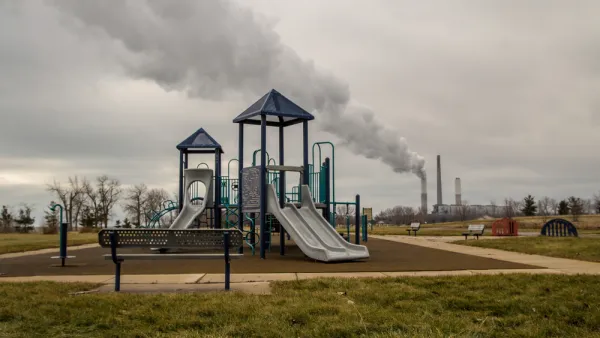Over strong objections from some auto and truck manufacturers, President Obama directed EPA to develop new fuel efficiency regulations for medium and heavy-duty trucks by March 2016 as part of his administration's effort to reduce carbon emissions.
"United States car and truck manufacturers have lobbied heavily against aggressive increases in federal fuel economy standards, saying that they could increase vehicle prices and diminish safety," writes Coral Davenport. This will be the second round of truck fuel effiency regulations.
In 2011, the E.P.A. issued its first round of fuel-economy regulations for United States trucks and heavy-duty vehicles built in the model years 2014 to 2018, which the agency projects will reduce carbon pollution by 270 million metric tons, or the equivalent of taking 56 million passenger vehicles off the road for a year"
No doubt the president's executive action, enabled by the "1970 Clean Air Act, which requires the E.P.A. to regulate any substance designated as a pollutant that harms or endangers human health", writes Davenport, will displease many in Washington who feel that Congress should be in charge.
Mr. Obama’s direction is among several executive actions he is taking on climate change, absent movement from Congress. He has also directed the E.P.A. to issue by June 1 a draft regulation to rein in carbon pollution from existing coal-fired power plants, the nation’s largest source of carbon pollution.
Increasing fuel efficiency standards for trucks is a significant step to reduce oil consumption and carbon emissions, according to Jesse-Prentice Dunn of the Sierra Club.
Medium and heavy-duty vehicles, everything from 18-wheelers to delivery trucks, are the fastest growing source of oil consumption in the transportation sector. Even though these vehicles only make up seven percent of the vehicles on the road, they guzzle more than 25 percent of transportation fuel.
EPA will work with the "Transportation Department's National Highway Traffic Safety Administration to develop and issue new fuel-efficiency and greenhouse gas standards by March 31, 2016," writes Aamer Madhani of USA Today.
In addition to "higher-efficiency engines", Prentice-Dunn points to other "new fuel saving technologies such as aerodynamic trailers, advanced materials and lower rolling resistance tires."
Not part of the president's announcement are other ways to reduce fuel consumption in the freight sector, such as "creat(ing) an energy-efficient, multi-modal freight system that relies on trains and ships, as well as trucks. When we’re smarter about what we ship and how we ship it, we save money and reduce carbon pollution", Prentice-Dunn writes.
As we previously noted, more stringent medium and heavy-duty truck efficiency standards come on top of increasing the fuel efficiency of passenger vehicle and light-duty trucks to 54.5 MPG by 2025. However, that goal will be reviewed in 2017, and with gas prices set to decrease in 2014 and 2015 according to the EIA, I wouldn't be surprised if that goal was tweaked to the benefit of the auto manufacturers.
As we noted in our post last month on the Detroit Auto Show, "(t)rucks accounted for more than half of all light vehicles sold in the U.S. last year, a reversal from the prior year. The shift coincided with lower fuel prices."
FULL STORY: Obama Requests New Rules for Cutting Truck Pollution

National Parks Layoffs Will Cause Communities to Lose Billions
Thousands of essential park workers were laid off this week, just before the busy spring break season.

Retro-silient?: America’s First “Eco-burb,” The Woodlands Turns 50
A master-planned community north of Houston offers lessons on green infrastructure and resilient design, but falls short of its founder’s lofty affordability and walkability goals.

Delivering for America Plan Will Downgrade Mail Service in at Least 49.5 Percent of Zip Codes
Republican and Democrat lawmakers criticize the plan for its disproportionate negative impact on rural communities.

Test News Post 1
This is a summary

Test News Headline 46
Test for the image on the front page.

Balancing Bombs and Butterflies: How the National Guard Protects a Rare Species
The National Guard at Fort Indiantown Gap uses GIS technology and land management strategies to balance military training with conservation efforts, ensuring the survival of the rare eastern regal fritillary butterfly.
Urban Design for Planners 1: Software Tools
This six-course series explores essential urban design concepts using open source software and equips planners with the tools they need to participate fully in the urban design process.
Planning for Universal Design
Learn the tools for implementing Universal Design in planning regulations.
EMC Planning Group, Inc.
Planetizen
Planetizen
Mpact (formerly Rail~Volution)
Great Falls Development Authority, Inc.
HUDs Office of Policy Development and Research
NYU Wagner Graduate School of Public Service



























